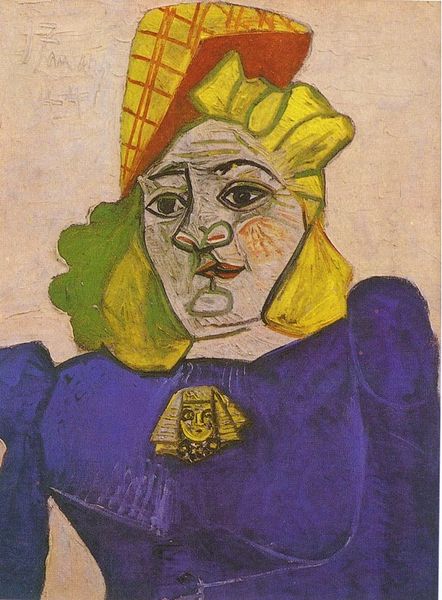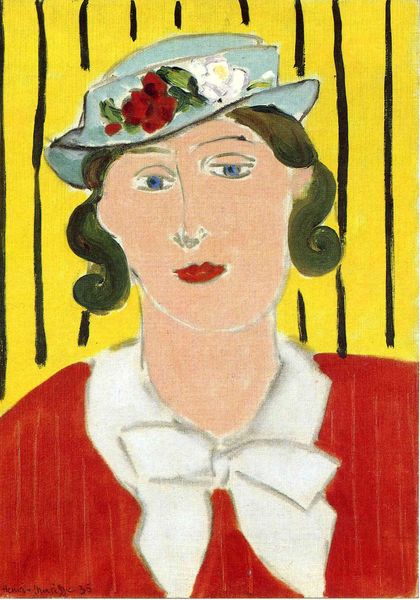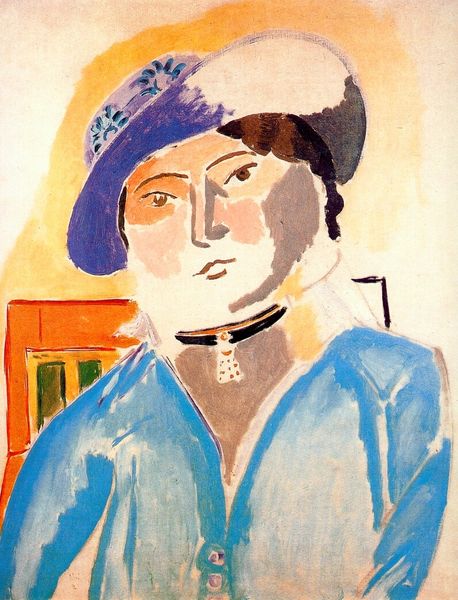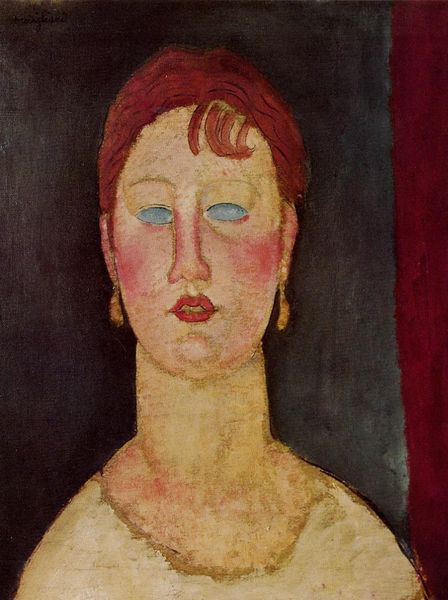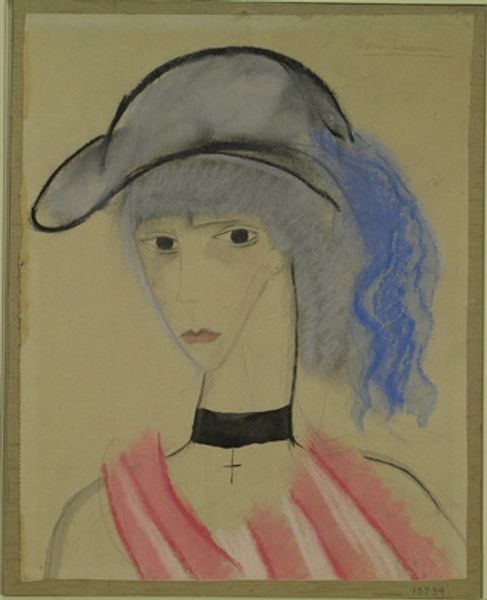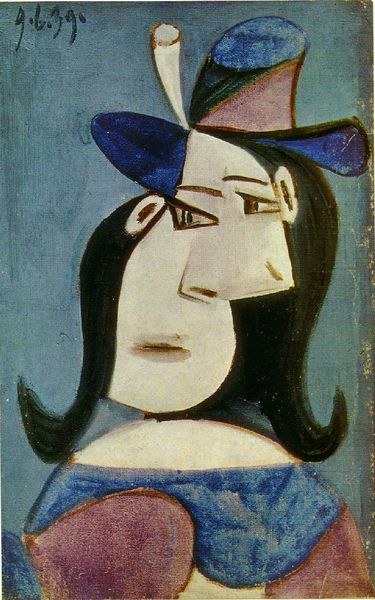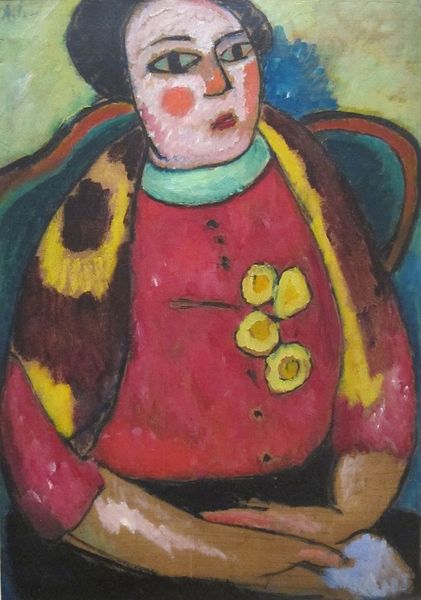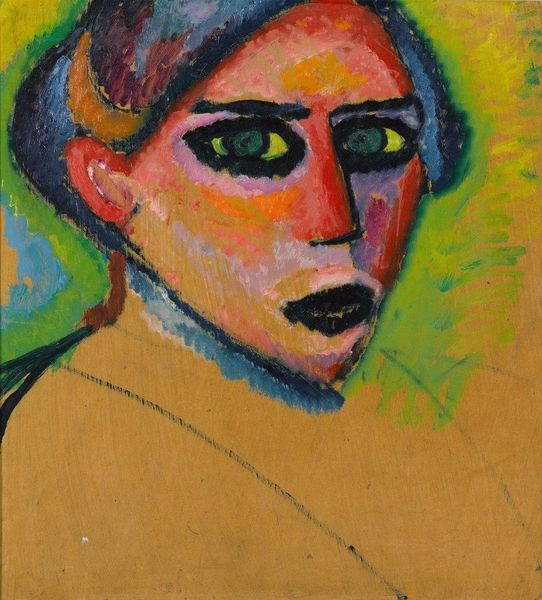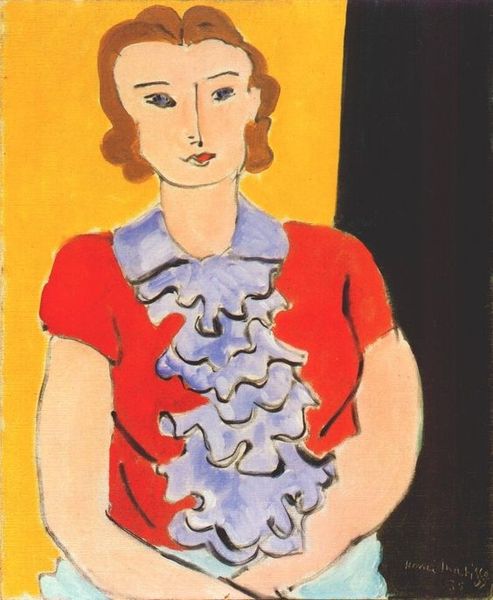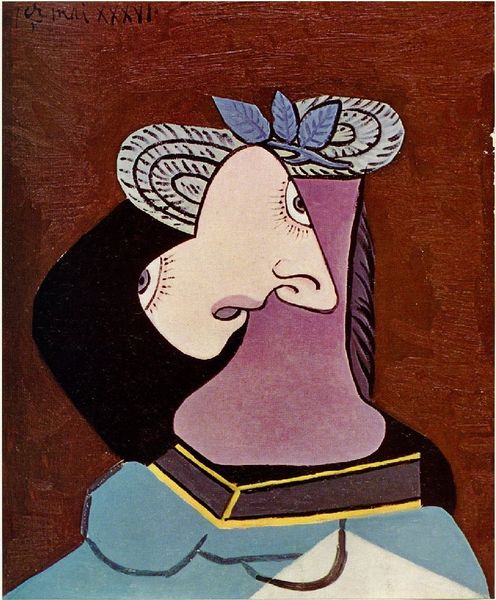
painting, acrylic-paint
#
portrait
#
cubism
#
painting
#
caricature
#
acrylic-paint
#
figuration
#
acrylic on canvas
#
portrait drawing
#
portrait art
#
modernism
Copyright: Pablo Picasso,Fair Use
Editor: Here we have Picasso’s "Portrait of D.M." painted in 1943 using acrylics. The bold colors and flattened perspective give it a somewhat unsettling feel. How do you read this piece formally? Curator: Indeed. I see a complex interplay of geometric forms. Note the juxtaposition of the rounded shapes of the face and hair against the sharper angles of the hat and dress. Observe how Picasso manipulates color. The cool blues and greens create spatial ambiguity. The application of paint also holds meaning: The visible brushstrokes disrupt the smooth surface, drawing attention to the materiality of the medium itself. Do you notice the stark contrast of the face with the hair? Editor: Yes, the planes of the face are almost mask-like, and very separate from the more textural, warmer tones of the hair framing it. Curator: Precisely. The lack of chiaroscuro flattens the figure, further emphasizing the picture plane. It moves beyond traditional representation by breaking down forms and rebuilding them, fragmenting reality to explore the essence of the subject. It is representational but it is not an attempt to mimic visual appearances. What effect does that have for you? Editor: It really emphasizes the artifice of painting itself – that it's a construction. What strikes me is how it almost verges on caricature. Curator: The distortion is deliberate. By fracturing the figure, Picasso lays bare the underlying structures of both the subject and the artistic process. This dissection creates an awareness of form and its relation to meaning. How do you now understand the unsettling mood you sensed initially? Editor: I now recognize it arising from the dissonance between recognizable portraiture and its radical re-construction according to cubist principles, challenging assumptions. Curator: Precisely! Formal analysis offers tools to decode layers of meaning through meticulous visual observation. Editor: That close look has changed how I see this piece; there’s a deliberate artistic intelligence at work here. Thank you.
Comments
No comments
Be the first to comment and join the conversation on the ultimate creative platform.
